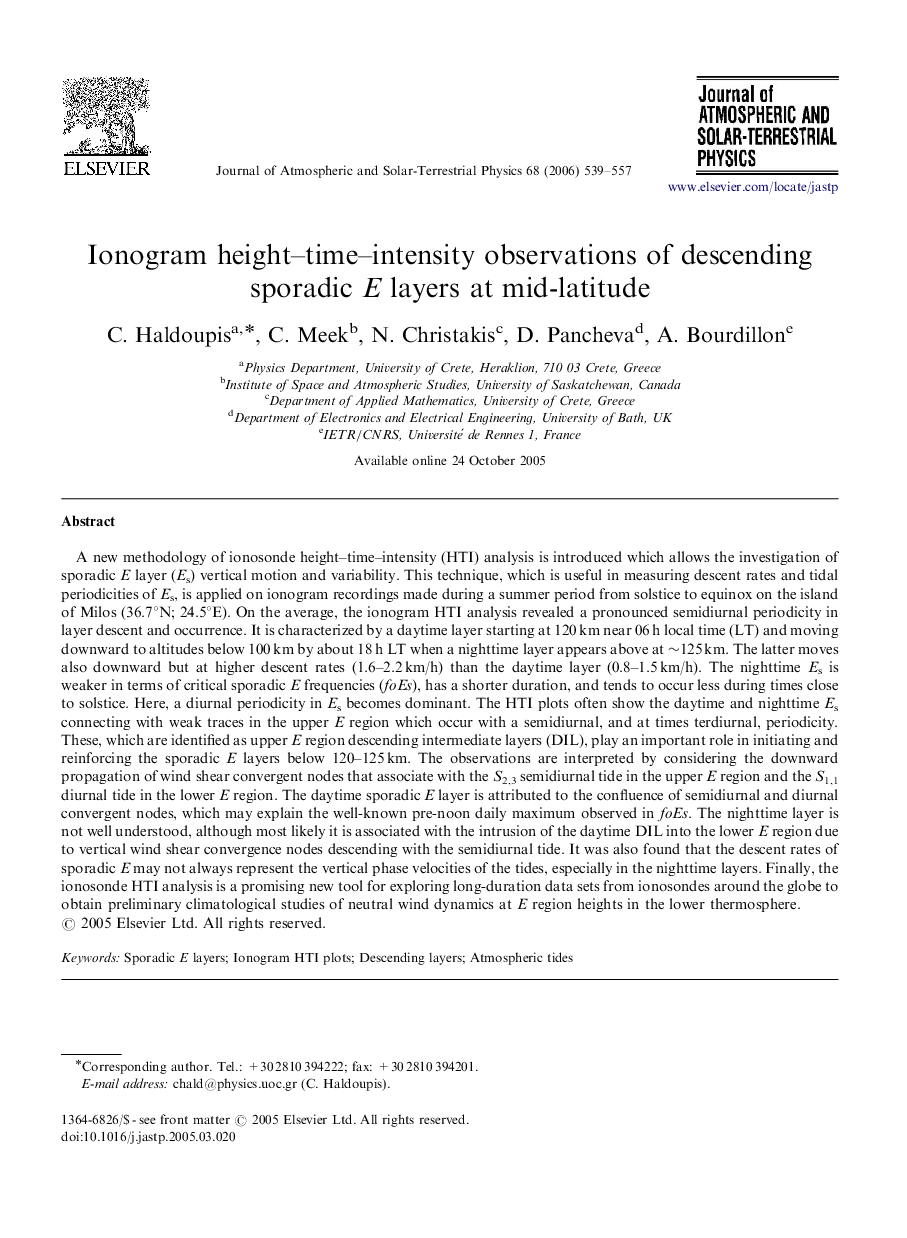| کد مقاله | کد نشریه | سال انتشار | مقاله انگلیسی | نسخه تمام متن |
|---|---|---|---|---|
| 1778488 | 1523682 | 2006 | 19 صفحه PDF | دانلود رایگان |

A new methodology of ionosonde height–time–intensity (HTI) analysis is introduced which allows the investigation of sporadic E layer (Es) vertical motion and variability. This technique, which is useful in measuring descent rates and tidal periodicities of Es, is applied on ionogram recordings made during a summer period from solstice to equinox on the island of Milos (36.7°N; 24.5°E). On the average, the ionogram HTI analysis revealed a pronounced semidiurnal periodicity in layer descent and occurrence. It is characterized by a daytime layer starting at 120 km near 06 h local time (LT) and moving downward to altitudes below 100 km by about 18 h LT when a nighttime layer appears above at ∼125 km. The latter moves also downward but at higher descent rates (1.6–2.2 km/h) than the daytime layer (0.8–1.5 km/h). The nighttime Es is weaker in terms of critical sporadic E frequencies (foEs), has a shorter duration, and tends to occur less during times close to solstice. Here, a diurnal periodicity in Es becomes dominant. The HTI plots often show the daytime and nighttime Es connecting with weak traces in the upper E region which occur with a semidiurnal, and at times terdiurnal, periodicity. These, which are identified as upper E region descending intermediate layers (DIL), play an important role in initiating and reinforcing the sporadic E layers below 120–125 km. The observations are interpreted by considering the downward propagation of wind shear convergent nodes that associate with the S2,3 semidiurnal tide in the upper E region and the S1,1 diurnal tide in the lower E region. The daytime sporadic E layer is attributed to the confluence of semidiurnal and diurnal convergent nodes, which may explain the well-known pre-noon daily maximum observed in foEs. The nighttime layer is not well understood, although most likely it is associated with the intrusion of the daytime DIL into the lower E region due to vertical wind shear convergence nodes descending with the semidiurnal tide. It was also found that the descent rates of sporadic E may not always represent the vertical phase velocities of the tides, especially in the nighttime layers. Finally, the ionosonde HTI analysis is a promising new tool for exploring long-duration data sets from ionosondes around the globe to obtain preliminary climatological studies of neutral wind dynamics at E region heights in the lower thermosphere.
Journal: Journal of Atmospheric and Solar-Terrestrial Physics - Volume 68, Issues 3–5, February 2006, Pages 539–557